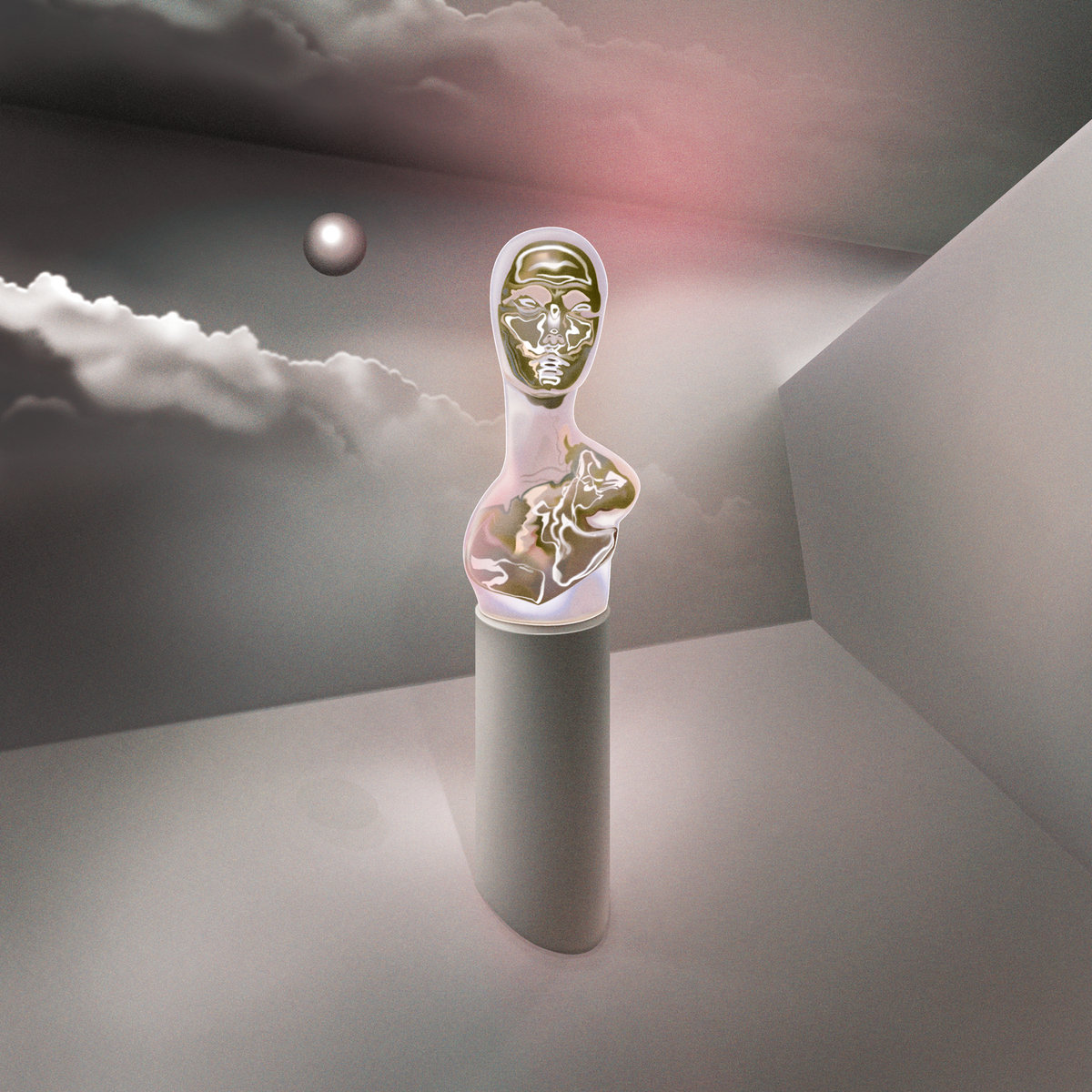Interview by Griffin Martell
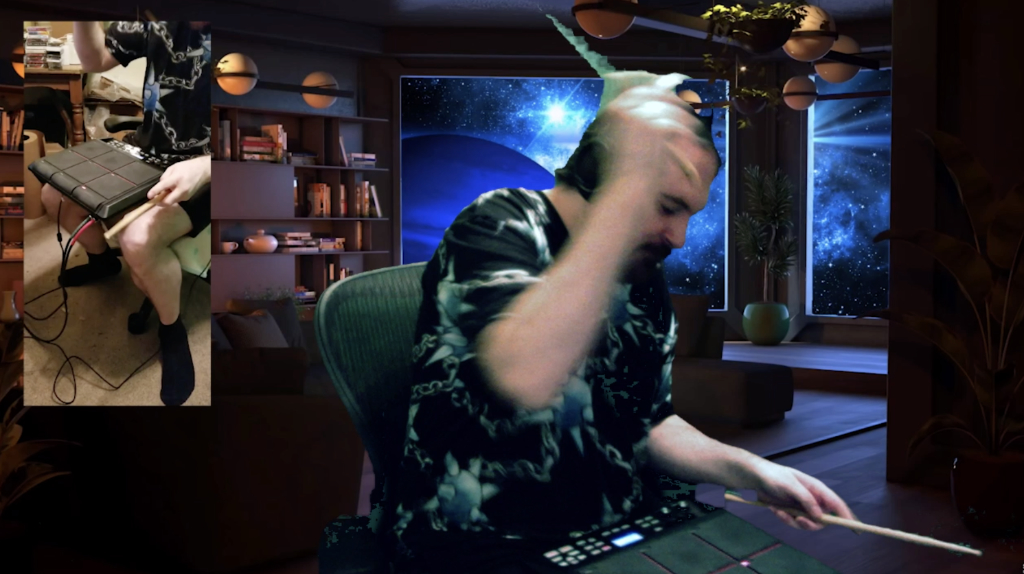
The ceaseless stream of data that has become a defining feature of our present reality continues to present new potentialities for those invested in the creation and representation of meaning. The Columbus, Ohio-based Keith Rankin is one of the said artists whose work in digital illustration and electronic music production implicitly responds to cultural shifts in information processing.
Over the past decade, Rankin has maintained a steady flow of output, releasing music under the moniker Giant Claw and designing album covers and commissions while co-curating an experimental music label, Orange Milk Records, with his friend and associate Seth Graham.
To appreciate the full scope of Rankin’s body of work, one ought to view his various projects in non-discrete terms. In many ways, his graphic and sound design practices inform one another by way of aesthetic or conceptual threading. This is perhaps best exemplified by Rankin’s distinctive (dare I say iconic?) visual designs for Orange Milk and his own Giant Claw project.
The saturated, DayGlo hues and surrealist object imagery adorning the covers of albums such as Dark Web and Soft Channel work to accentuate the abstracted aural contours of pop-vocal fragments, MIDI synth chords and digi-baroque string arrangements heard within.
Nothing is explicit about Rankin’s music, nor his visuals, for that matter. Through symbols, gestures, affect and phrasing, he signifies meaning to the listener/viewer. The experience of listening to a Giant Claw record is a bit like sifting through the glut of data found on the Web – a musical representation of clicking through Wikipedia’s Random Article tab ad infinitum, if you will. Put more simply, you never really end up where you began, and along the way, you encounter signs, characters and figures of both intimate familiarity and alien unfamiliarity.
The title of the latest Giant Claw record encapsulates this method of non-linear sonic narration that has evolved into a signature of Rankin’s sound design. Recently released on Orange Milk Records, Mirror Guide is a record conceptually rooted in the notion of hyperrealism first propounded by Jean Baudrillard and further articulated within the context of musical aesthetics by the late composer Noah Creshevsky.
Creshevsky actually acted as something of a mentor to Rankin after they were introduced in 2014 and, in 2018, Orange Milk released a collection of Creshevsky’s work. Rankin was inspired by Creshevsky’s ideas surrounding hyperrealism, which the latter defines as an electroacoustic musical language constructed from sounds that are found in our shared environment, handled in ways that are somehow exaggerated or excessive1. Listening to Mirror Guide, one can hear the influence of Creshevsky in its use of computer programming to recreate, extend and warp the sounds of orchestral instrumentation.
Billed as a “hyperreal, virtual cello performance,” Mirror Guide is, by Rankin’s account, his closest approximation of Creshevsky’s hyperreal philosophy to date. This is due to Rankin’s heightened use of organic and acoustic sounds (or the simulation thereof), including ambient noise, instrumentation and human vocals. Digital cello motifs recur throughout the album, imparting a more formal coherence than heard on previous releases.
The key to Rankin’s hyperrealist renderings on Mirror Guide is the cybernetic awareness he brings, filtering the organic through the synthetic and vice versa, thereby destabilising the horizons of meaning upon which these concepts rest. In many ways, the procedural logic of data seems to be at odds with human expression; however, Keith Rankin’s art guides us along many avenues that present new and exciting possibilities for their reconciliation.
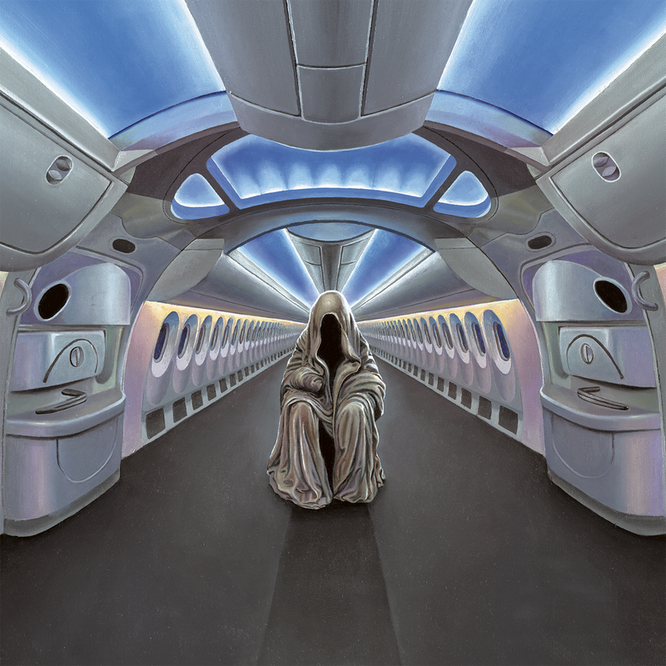
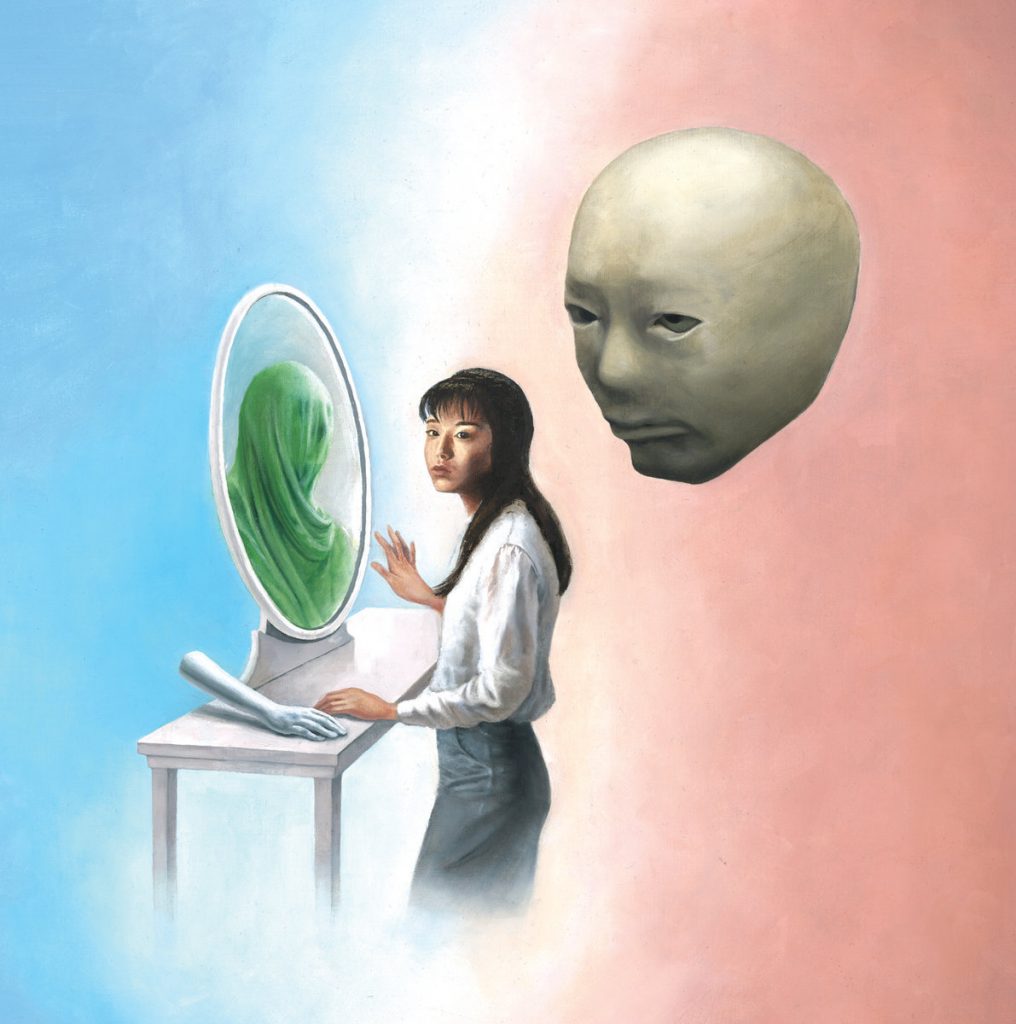
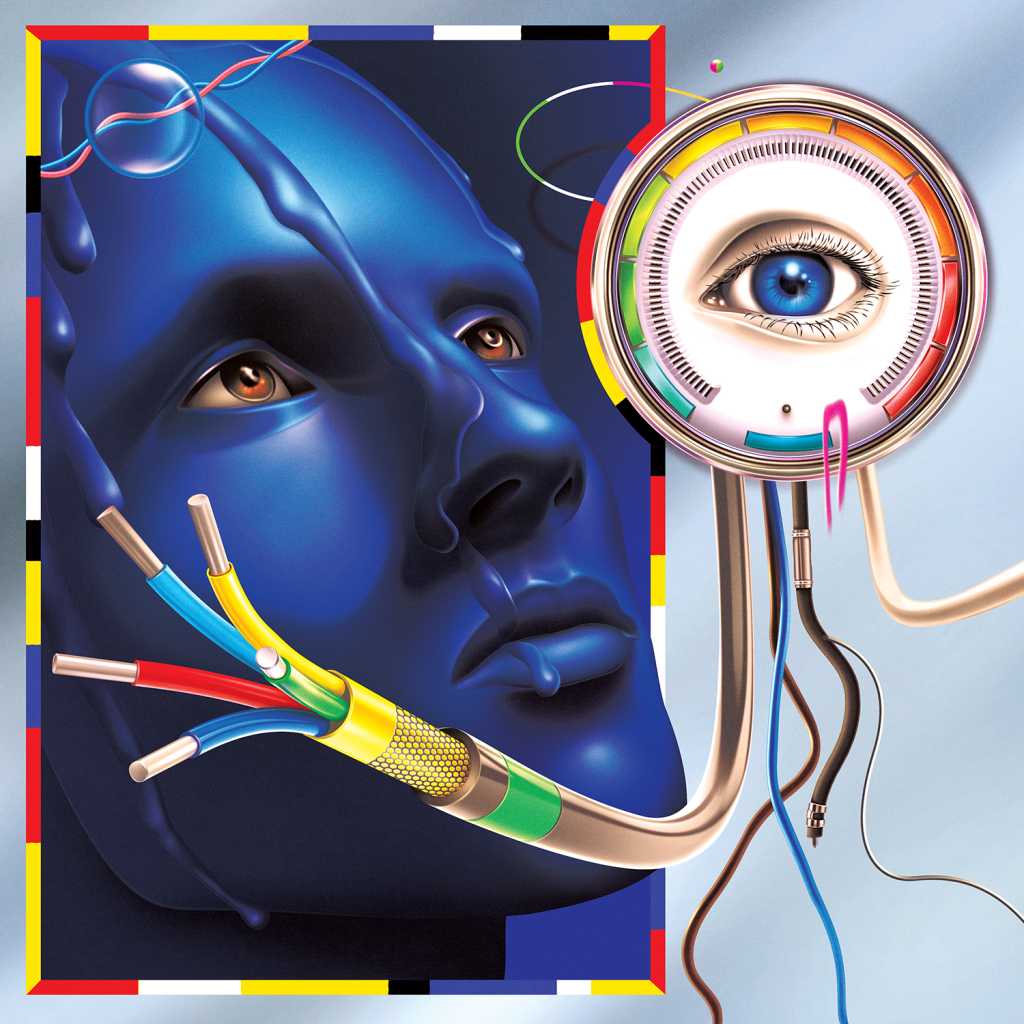
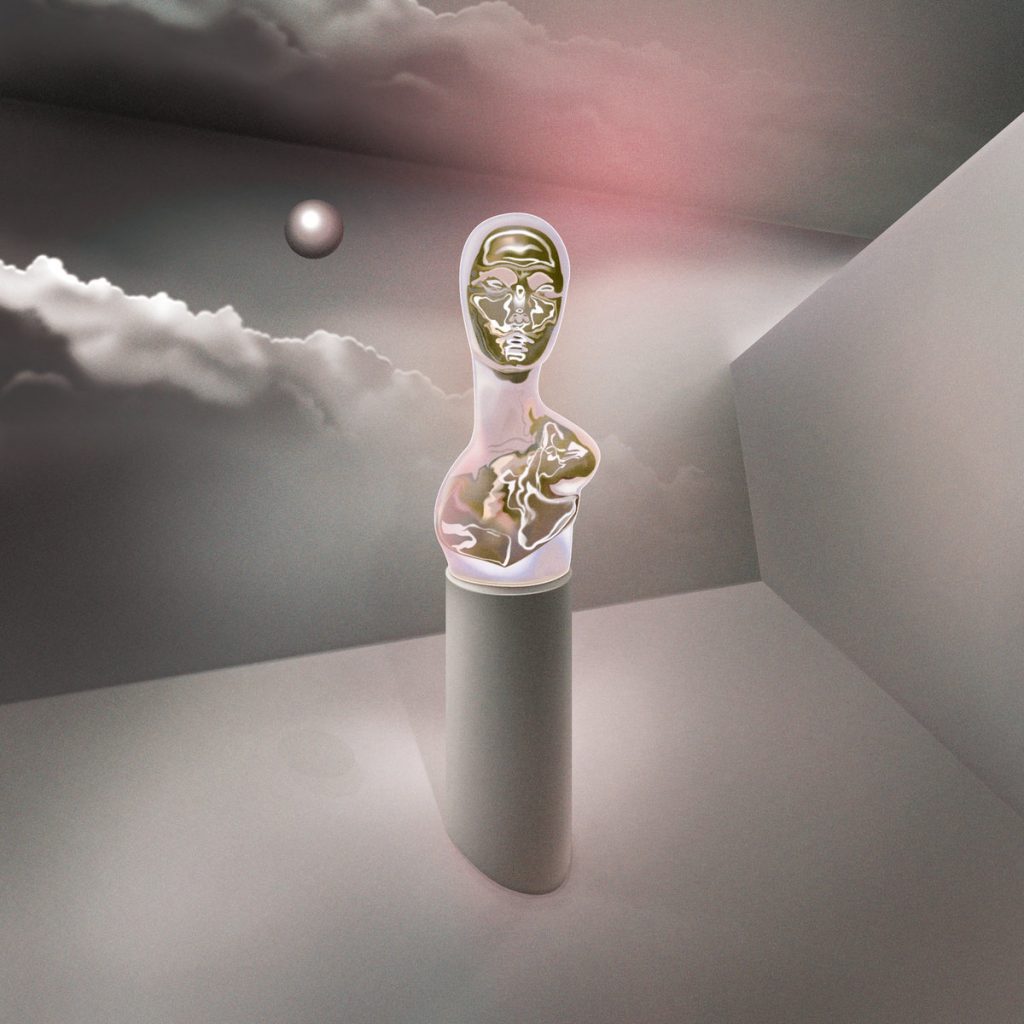
Over the last ten years, Orange Milk Records and the Giant Claw project have risen from relative obscurity to established and well-respected figureheads of experimental music and visual art. How has that progression played out for you on a personal level? Ten years ago, would you have expected these projects to hold such staying power?
By making album covers for Orange Milk and Giant Claw, I started to get commission offers, which eventually became frequent enough to make a living doing freelance work; that’s the most significant change in my life over the past ten years. I’ve always liked fantasising about the future in a more “what will the world look like?” way, but I hated thinking about my own personal, immediate future, so imagining something like “will I be remembered in ten years, will my art still be around, will I be better off” is a really uncomfortable train of thought, both when I first started and still now.
Giant Claw and Orange Milk releases are often categorised as vaporwave, plunderphonics or ‘post-Internet.’ However, those terms never seemed to capture the full scope of either project. Do you feel a connection to the vaporwave/post-net art scene of the late aughts/early 2010s, or do you feel it was incidental that your work got lumped in with that movement?
A lot of post-internet classification is trying to get at a certain frame of mind that I think developed after the 1990s when massive chunks of the world’s population were trying to transition to a new global model of communication.
I heard the writer Emily Pothast talk about how we should think of Internet communication as a tectonic shift equivalent to the invention of the printing press, and it’s probably even more impactful in the long term.
Suppose I try to think about that area of influence in my art. In that case, it’s got to be tied up in the fact that my early pre-Internet life was socially disconnected and then suddenly exploded into global interconnectedness.
I grew up in Dayton, Ohio; I’m 36 years old and didn’t have computer access until my early teens. I remember the mental impact of getting on an image search for the first time, realising that I could look up almost anything I could think of those old boundaries of access were just gone all of a sudden; getting in chat rooms and forums, exploring niche communities that way, voyeuristically looking at how people were interacting.
And when you’re that young, your mind can’t rationalise or contextualise the shift, but it creates a before and after the split. Not every generation will experience that kind of thing, but it changes a lot, like how I assigned value.
It created the illusion that all information is a free and infinite resource. At first, I was high on access; for a long time, I felt like I needed to absorb as much as I could online to take advantage of the new availability; I’d print out pictures I liked or would try to burn CD-Rs of music and data discs, which is so funny to think about now. It took a while for my sense of value to put the digital and physical realms on equal footing.
And really, even referencing a digital realm is misleading; when I say that it’s just another way of describing access to information and access to other people’s thoughts, that’s what the digital realm is to me, an expanded view of human thought that’s sprawled out to see if we look.
So when I think of net art, it’s not defined by the surface aesthetics; it’s still about human emotion and the struggle to understand and relate to other people and ourselves in a much larger and sometimes overwhelming context. Art can convey that feeling using almost any skin or genre.
While we’re on the topic of vaporwave and post-net art, have you seen evidence of niche, digital music and art cultures being hegemonised by mainstream culture in recent years?
I think that’s the cycle of culture in general. Small subcultures are always popping up; they form collective identities that grow until the mass culture absorbs them into wider public consciousness.
There are lots of niche cultures that avoid cyclical absorption with specific barriers, like harsh noise music or anything that is too far removed from historical precedent, but if you look at something like vaporwave or like glossy 3D design styles, there aren’t many barriers preventing them from assimilation into mass culture.
I don’t see a problem with the cycle as a basic concept; the problem is with bloodthirsty capitalism, where companies suddenly pluck art styles that have organically bloomed inside a subculture and present a de-fanged version of them with the sole intention to profit. And what I described is such common knowledge; everyone knows that happens.
Companies can somewhat alleviate the issue by paying artists well and listening to their ideas, just treating them well and with respect; some places do, and some don’t. But the bigger solution in my mind is to have democratic work environments and a totally overhauled idea about how governments support the public, which feels like a long way off.
You yourself recently designed images that were used in a New Balance ad. How do you feel about your art being used to market consumer products? Do you buy into the cynical view of hegemony as the exploitation of labour (i.e. the ‘culture vulture’ phenomenon), or do you view it in more optimistic terms as a sort of natural progression of culture?
I would feel weirder about my music being used in a mass commercial context. When you start relying on a skill for money, a certain level of separation forms, and from a financial standpoint, it’s still challenging to turn down larger commissions, so I’m glad to have the work and escape returning to a 9-5 situation.
But I do wish I wasn’t so reliant on the commercial world. I’ve seen more artists starting to make a living with Bandcamp subscriptions or Patreon-style setups, and I see that as my next goal, escape the worker/boss hierarchy if possible.
Your visual art practice seems intrinsically tied to your music. What considerations go into designing a Giant Claw album cover? Do you think album artwork can enhance the listening experience and vice versa?
It’s very different from most of my commercial work; I try to make the Giant Claw and some Orange Milk covers reflect a deep intangible feeling. To me, the pleasure in art is escaping language and unlinking emotion from the same few descriptors that always get used.
It’s like when you feel elated or depressed; those words aren’t enough; each feeling is a huge web of interconnected responses. “I’m happy, I’m sad” is not going to cut it; here’s this 40 minutes of music instead. I want the album art to serve a similar function, like conveying the intuitive identity of the music with imagery.
Can you talk a bit about the artwork for Mirror Guide and how it plays into the narrative or thematic content of the record?
My Giant Claw album covers, including Mirror Guide, are usually collaborations with my longtime partner Ellen Thomas. I’ll make a rough version of the piece in Photoshop, and then Ellen recreates it using oil paint, and we just talk about it through the process.
So there’s a built-in sense of conversion between mediums in the art that I love and find appropriate for the music. The background of the Mirror Guide cover is from a photo of an empty aeroplane interior, which immediately lit me up when I saw it. It kind of looks like a Star Trek set, but I also realised I’d never even noticed how beautiful the interior design was before.
Adding the cloaked figure, I thought maybe that was the mirror guide or some sort of avatar for self-reckoning. I’m packing a lot of thought into an empty aeroplane photo, but that was my instinct.
You cite the late composer Noah Creshevsky and his conception of musical “hyperrealism” as a major influence on this record. How did you come across Noah’s work, and how do you integrate “hyperreality” into your own work?
When I was writing a description of my album Dark Web around 2014, I started using the term hyperrealism around the music. I thought it was a fitting term for all the sounds that emulated real-life physics but could also stretch beyond what we might recognise from nature. I also thought hyperrealism described how mass culture itself became a shorthand, shared secondary language in music and other media.
Like how a fundamental change in a pop song has a widely recognised history, to the point where those cultural associations are usually the first thing we register when it happens in a new song. It’s really just another way to describe a trope.
But anyway, when I posted some of those thoughts online, the writer Scott Scholz messaged me asking, “Have you heard of Noah Creshevsky? He has a whole theory of Hyperrealism.” And I think Scott messaged Noah and showed him my music as well because we started corresponding from there, and I realised Noah had been articulating those ideas for a long time.
In some ways, Mirror Guide is closer to Noah’s definitions of Hyperrealism because it primarily focuses on recognisable organic sounds but uses them in ways that would be impossible for a performer on the physical instrument. I remember he commented on one of the tracks that featured a digital cello, and he seemed kind of tickled, basically saying, “You put it in a key that cello can’t play; that’s hyperrealism.”
But Noah was very open and would provide feedback and talk about all kinds of things; he was encouraging to many other artists and me on Orange Milk. I mean, my label partner Seth named his son after him — he became an important person to us and was a model for how older, revered artists could embrace people just coming up.
He had a deep history, like working with John Cage, doing early tape splicing and then computer collage, teaching music at Julliard and Princeton, it goes on, but he still gave lots of time to a bunch of practically unknown electronic artists from the midwest with no formal training.
Sometimes I would get an email from him and put off responding for a few weeks, and when I think back on that, I feel guilty about it, like I started taking his presence for granted.
Is this record your first time working with guest vocalists? What made you want to work with live performers rather than samples as you have done on previous records? What were the challenges and advantages of this approach?
I have collaborated with vocalists a few times; I did a remix album for the band Guerrilla Toss, where I built everything around Kassie Carlson’s lines. I worked a little with Tamar Kamin from the band The Van Allen Belt on my album Soft Channel, but for Mirror Guide, Tamar and I recorded in person with clearer intention.
Basically, I wanted a less choppy edited feel to the vocals, which was typically present when I’d be working with samples. I imagined Tamar’s voice existing in the music as a more flowing texture or melodic element rather than conveying specific meaning through lyrics.
The music I had recorded up to that point was rapidly shifting and in free tempo, so my favourite material came when I got on the keyboard. We started improvising — she was able to stretch out a little more and sing longer phrases.
There’s also a tiny vocal part from the artist Diana Gruber who I’m sure I will work with more at some point since we both live in Ohio, and two tracks that feature NTsKi, who I’ve been a fan of and has worked with Orange Milk artists like CVN and Foodman before. NTsKi has a full album coming out later in the year on Orange Milk that is absolutely incredible, and I would really love to do something more substantial like a full record with her as well.
Have you enjoyed the solitude of the past year? Has artistic collaboration helped you feel less lonely in any way?
Yeah, in a way, I have, I love having conversations with people, but I’m also firmly introverted. I’m not immune to the effects of isolation, however. In the last month or two, I’ve really had sudden feelings of loneliness.
I’ll usually get on Twitter or Discord and feel paralysed, like, will posting something alleviate that feeling? Living with my partner Ellen prevents most of that, though; we will work through most of the day but still get time to socialise, talk with each other, and collaborate consistently. My heart goes out to the people who’ve just been sitting alone in their apartments for a year.
Do or don’t take yourself seriously…what’s the best attitude for an artist to achieve a high level of creativity?
I am the type of personality who takes themselves seriously but also has extreme issues of self-doubt. In interviews like this, even I’ll think, “Jesus, do I sound up my ass?” But I try to express what I’m thinking and not become too crippled by imposter syndrome.
I was looking at Arca’s Twitter a while ago, and it made me realise that she had a really intentional way of posting and addressing her fans, and most of her fans were replying in a similar register, if that makes sense. That’s to say that people usually throw back at you whatever attitude you put out. But I don’t know if that has anything to do with maintaining creativity; I think I’ve run out of insight about how to keep that; it’s hard; try to give yourself a break, is my advice.

